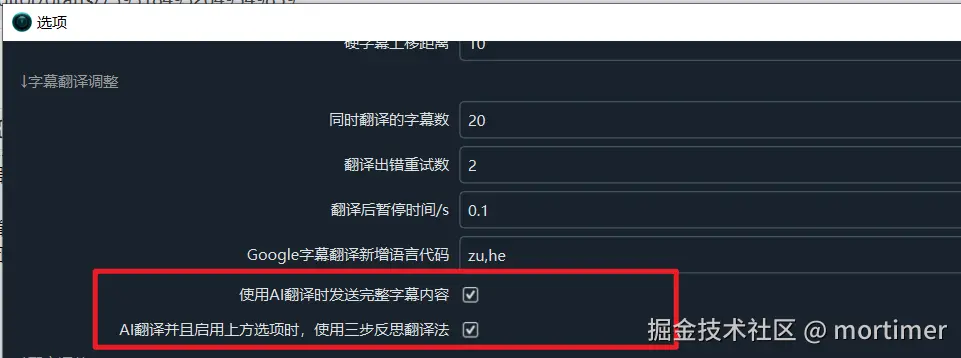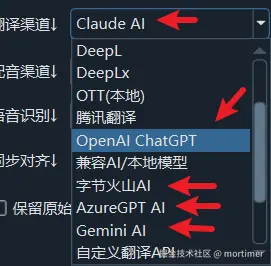使用三步反思翻译法
使用AI翻译(如ChatGPT、Gemini等)进行字幕翻译,可以充分利用上下文信息显著提升翻译质量,尽管偶尔可能出现空行等小问题。
视频翻译 v3.12版本 新增了“三步反思翻译法”来进一步优化AI翻译效果。此方法要求AI首先进行直译,然后反思直译结果中的不足并提出修改建议,最后根据建议对原文进行意译。 这三步迭代能够显著提高翻译精度。
然而,“三步反思翻译法”也存在一些限制:首先,它会消耗更多Token;其次,它对AI模型的智能程度要求较高,低智能模型的输出结果往往杂乱无章。因此,该功能仅支持OpenAI ChatGPT、Gemini等在线大型语言模型,不支持本地小型模型。
开启方法:
步骤一:启用高级选项
在菜单栏中,依次点击“工具” -> “选项” -> “高级选项”,然后勾选下图所示的两个选项。

步骤二:选择AI翻译渠道
在“翻译渠道”选项中,选择“OpenAI ChatGPT/Gemini/Claude AI/302.AI”等支持AI翻译的渠道。

步骤三:选择合适的模型
在模型选择时,对于ChatGPT系列,请务必选择“gpt-4”或“gpt-4-mini”模型,避免使用“gpt-3.5”。 这是因为模型智能程度越高,“三步反思翻译法”的效果越好;反之,则可能得到毫无意义的结果。
总而言之,结合“三步反思翻译法”和合适的AI模型,能够极大提升字幕翻译的质量和效率。 请注意选择合适的模型以获得最佳效果。
